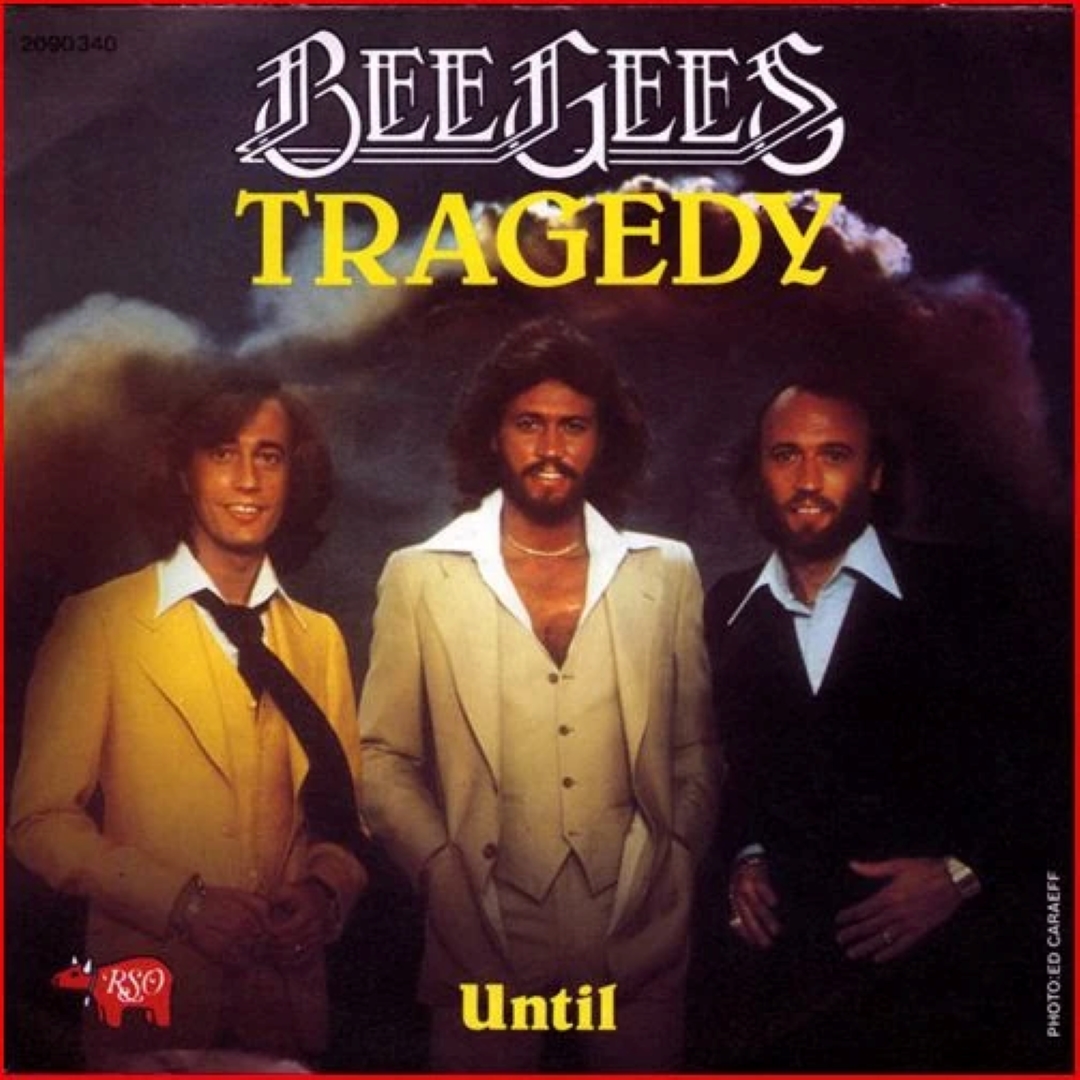🌟 The Fever Years: Riding the Wave of Disco
By 1979, the Bee Gees were untouchable. With the Saturday Night Fever soundtrack (1977), Barry, Robin, and Maurice had become the faces—and voices—of disco. Their falsetto harmonies and pulsating rhythms filled every nightclub, roller rink, and car radio. “Stayin’ Alive,” “Night Fever,” and “How Deep Is Your Love” dominated not only the charts but also the very atmosphere of the late 1970s.
But success brings expectations. When they entered the studio to record Spirits Having Flown (1979), the follow-up to Fever, the world was waiting to see if the Gibb brothers could deliver again.

🔥 A Song Born from Chaos
“Tragedy” wasn’t written in the quiet of a studio—it was born during a writing spree that also produced “Too Much Heaven” and “Shadow Dancing.” Barry, Robin, and Maurice would sit together, tossing musical ideas into the air until one caught fire.
The idea for “Tragedy” came from wanting something explosive. The Bee Gees didn’t want just another love ballad—they wanted drama. From the very first chord, the song erupts like a storm: pounding drums, sudden pauses, and that haunting falsetto cry. It wasn’t just disco; it was operatic disco, larger than life.
⚡ Sound of the Apocalypse
What made “Tragedy” unforgettable wasn’t only the lyrics of heartbreak—it was the sound. Barry’s falsetto cuts through like lightning. Robin’s trembling voice carries the emotion of despair. Maurice’s production work layers the track with synthesizers and guitars, building a sonic wall that feels almost suffocating.
And then—there’s the explosion. Quite literally. The sound effect of a bomb going off at the climax of the song was added to heighten its intensity. Few pop songs dared to be this theatrical, but the Bee Gees thrived on boldness.
🎶 Lyrics of Love and Destruction
The words are simple: love lost, love destroyed. But paired with the overwhelming production, they feel catastrophic.
“Tragedy / when the feeling’s gone and you can’t go on…”
It wasn’t just heartbreak—it was the end of the world. The Bee Gees captured the way love can feel apocalyptic when it falls apart, and millions of listeners connected with that emotional exaggeration.
🚀 Chart Domination
Released in early 1979, “Tragedy” shot straight to the top of the Billboard Hot 100, becoming one of the group’s nine U.S. number-one hits. It also reached number one in the U.K., cementing their reign on both sides of the Atlantic.
At this point, the Bee Gees weren’t just writing hits for themselves. They were also crafting chart-toppers for other artists—Andy Gibb, Barbra Streisand, Frankie Valli. But “Tragedy” was proof they could still keep the spotlight firmly on themselves.
🕺 More Than Disco
Some critics dismissed “Tragedy” as just another disco song. But listen closely, and you’ll hear something different. The structure is closer to rock opera than to pure dance music. The intensity is Shakespearean.
This was the Bee Gees showing that disco could be more than glitter balls and dance floors. It could be dramatic. It could be devastating.
🌍 Legacy of a Pop Explosion
Even after the disco backlash of the early 1980s, “Tragedy” endured. The song was later covered by British pop group Steps in 1998, introducing it to a new generation. While their version leaned into camp and fun, the original still carries an emotional weight that feels untouchable.
For the Bee Gees, “Tragedy” remains a symbol of their ability to take risks. They weren’t afraid to push the boundaries of what a pop song could sound like. In the end, they created one of the most dramatic love songs of the 20th century.